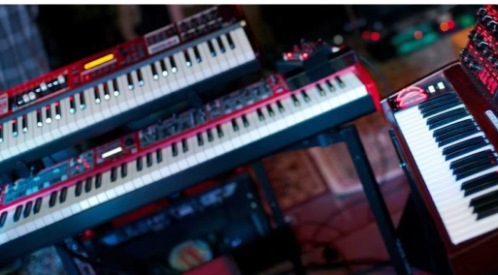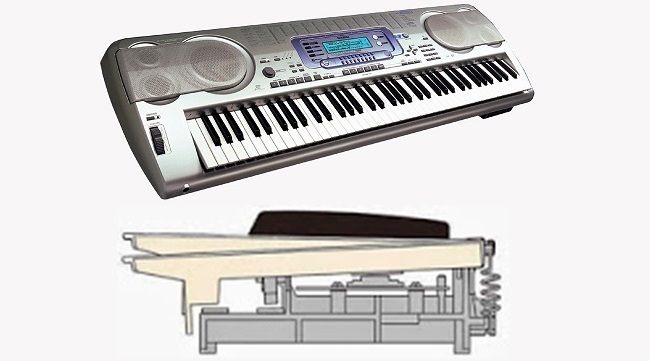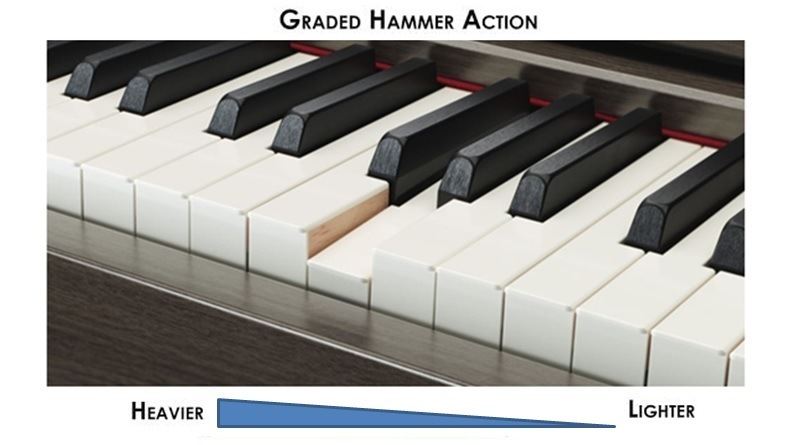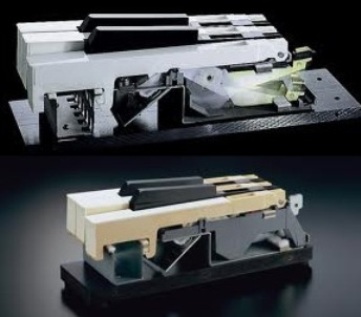
On some piano keyboards, you have thinner keys whereas some pianos have thicker keys. So Action basically refers to the feel of the keys on the instrument. Learn about the various piano action – synth, semi-weighted, fully-weighted, Hammer key actions, ivory top keys.
Synth action (spring loaded) is found in almost all the musical keyboards. With a Synth action it is easier to play faster as the keys are lighter.
Synth action (lightweight action) keyboard is suitable for playing fast lead lines, for playing organ style but is not very suitable for piano style of playing.
Almost all the entry level 61-key keyboards have this action.
 Spring loaded key action, commonly found on electronic keyboards
Spring loaded key action, commonly found on electronic keyboardsWeighted Action Keys
This action imitates a real piano action; the keys are heavier and harder to play. The better the piano, the more authentic is the feel of the keys.

In graded hammer action, the keys are harder (offer more resistance) in the lower registers/octaves (so that you can play those pounding octaves) and become lighter as you go towards the higher registers/octaves (makes it easier to play those quick notes). This is how a real grand piano works.

Key Action on Different Piano Brands
- Casio: Uses terms such as the ‘Tri Sensor Scaled Hammer Action Keyboard I & II’ for their hammer action pianos.
- Yamaha: Graded Hammer Standard (GHS), Graded Hammer [Effect] (GH/GHE), Graded Hammer 3 (GH3), Natural Wood (NW) — beginning with semi-weighted to fully weighted.
- Roland: Mainly uses the term Progressive Hammer Action (PHA) system (I, II & III) for the action on its high end digital pianos. Roland also uses terms such as Ivory Feel G and Ivory Feel S.
Leave a Reply